
Ho Chi Minh City, commonly known as Saigon, is the most populous city in Vietnam, with a population of around 10 million in 2023. The city's geography is defined by rivers and canals, of which the eponymously-named Saigon River is the largest. As a municipality, Ho Chi Minh City consists of 16 urban districts, five rural districts, and one municipal city (sub-city). As the largest financial centre in Vietnam, Ho Chi Minh City has the highest gross regional domestic product out of all Vietnam provinces and municipalities, contributing around a quarter of the country's total GDP. Ho Chi Minh City's metropolitan area is ASEAN's 6th largest economy, also the biggest outside an ASEAN country capital.

Hồ Chí Minh, colloquially known as Uncle Ho or just Uncle, and by other aliases and sobriquets, was a Vietnamese communist revolutionary, nationalist, and politician. He served as prime minister of the Democratic Republic of Vietnam from 1945 to 1955 and as president from 1945 until his death in 1969. Ideologically a Marxist–Leninist, he was the Chairman and First Secretary of the Workers' Party of Vietnam, the predecessor of the current Communist Party of Vietnam.
Articles related to Vietnam and Vietnamese culture include:

The August Revolution, also known as the August General Uprising, was a revolution launched by the Việt Minh against the Empire of Vietnam and the Empire of Japan in the latter half of August 1945. The Việt Minh, led by the Indochinese Communist Party, was created in 1941 and designed to appeal to a wider population than what the communists could command.

Nguyễn Phan Long was a Vietnamese journalist and politician who served as Prime Minister of the State of Vietnam from January to May in 1950. He was dismissed by the Head of State Bảo Đại under pressure from the French colonial authorities, who resented his pro-American and nationalist attitude.
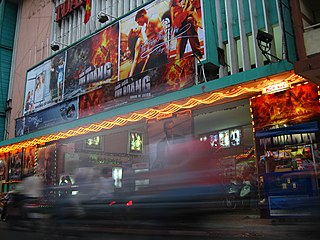
The cinema of Vietnam originates in the 1920s and was largely influenced by wars that have been fought in the country from the 1940s to the 1970s.
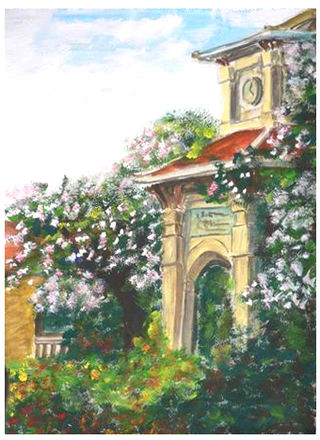
Lê Hồng Phong High School for the Gifted is a highly selective high school in Hồ Chí Minh City, Vietnam. Established in 1927, the school is one of the oldest high schools still operating in Vietnam.

Vietnamese art is visual art that, whether ancient or modern, originated in or is practiced in Vietnam or by Vietnamese artists.

The Metropolitan Archdiocese of Saigon or Archdiocese of Ho Chi Minh City is a Roman Catholic ecclesiastical territory in the south of Vietnam. By far the largest diocese in the country by population of people and second in the number of Catholics, yet like most big cities it only covers a small area of 2,390 km2 (920 sq mi).

The Vietnamese National Army was the State of Vietnam's military force created shortly after the Élysée Accords, where the State of Vietnam was recognized by France as an independent country ruled by Vietnamese Emperor Bảo Đại. It was commanded by Vietnamese General Hinh and was loyal to Bảo Đại. The VNA fought in joint operations with the French Union's French Far East Expeditionary Corps (CEFEO) against the communist Việt Minh forces led by Ho Chi Minh. Different units within the VNA fought in a wide range of campaigns including the Battle of Nà Sản (1952), Operation Hautes Alpes (1953), Operation Atlas (1953) and the Battle of Dien Bien Phu (1954).
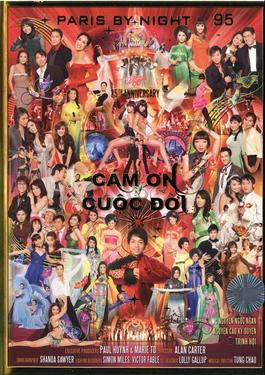
Paris By Night 95: 25th Anniversary - Cám Ơn Cuộc Ðời is a Paris By Night program produced by Thúy Nga Productions that was filmed at the Terrace Theater at the Long Beach Convention and Entertainment Center on September 21, 2008.

Tôn Thất Thiện (1924–2014) was a South Vietnamese nationalist of the post-World War II generation who had the rare distinction of serving and watching at close quarters the two historic leaders of post-World War II Vietnam: presidents Ho Chi Minh in the Viet Minh coalition in 1945–46, and Ngô Đình Diệm 1954–55/1956–59/1963. He played a significant though understated role in the nationalist attempt to preserve a non-Communist Vietnam.
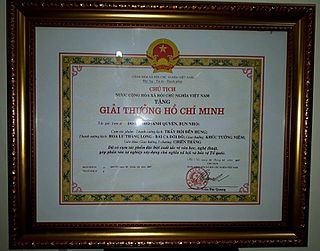
The Hồ Chí Minh Prize is an honorary award given by the government of Vietnam in recognition of cultural and/or scientific achievement. The prize was established by decree in 1981, and has been awarded in 1996, 2000, 2005 and 2012, often posthumously. The prize is named for Ho Chi Minh, who was Chairman and founder of the Workers' Party of Vietnam, that is considered one of the highest honors bestowed by Vietnam.
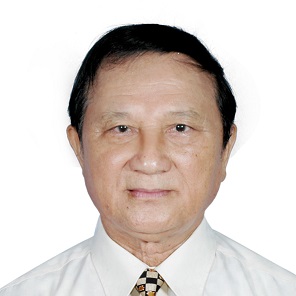
Nguyễn Hồng Giáp is a Vietnamese scholar.
Đinh Đăng Định was the personal photographer to Ho Chi Minh. He also co-founded the Vietnam Artistic Photographer's Association (VAPA) with Lâm Tấn Tài.
Phạm Thanh Tâm was a Vietnamese journalist and war artist, who used the pen name Huỳnh Biếc. His career spanned the First Indochina War as a Việt Minh soldier participating in the resistance against French colonialism, as well as the Second Indochina War as a member of the People's Army of Vietnam against South Vietnam and the United States.
Nguyễn Ðức Thọ is a Vietnamese artist who was North Vietnamese war artist whose career spanned the Second Indochina War. He was born in Hà Nam Province into a family with strong ties to the revolution against French colonialism. His mother and father donated fabric and bicycles to the Việt Minh.
Witness Collection is one of the largest private collections of Vietnamese art in the world. It conducts detailed research into the art in its collection and Vietnam's 20th century history, as well as providing state-of-the-art conservation.
Dương Tử Giang (1915–1956), born as Nguyễn Tấn Sĩ, was a Vietnamese writer, journalist, playwright and revolutionary.


















